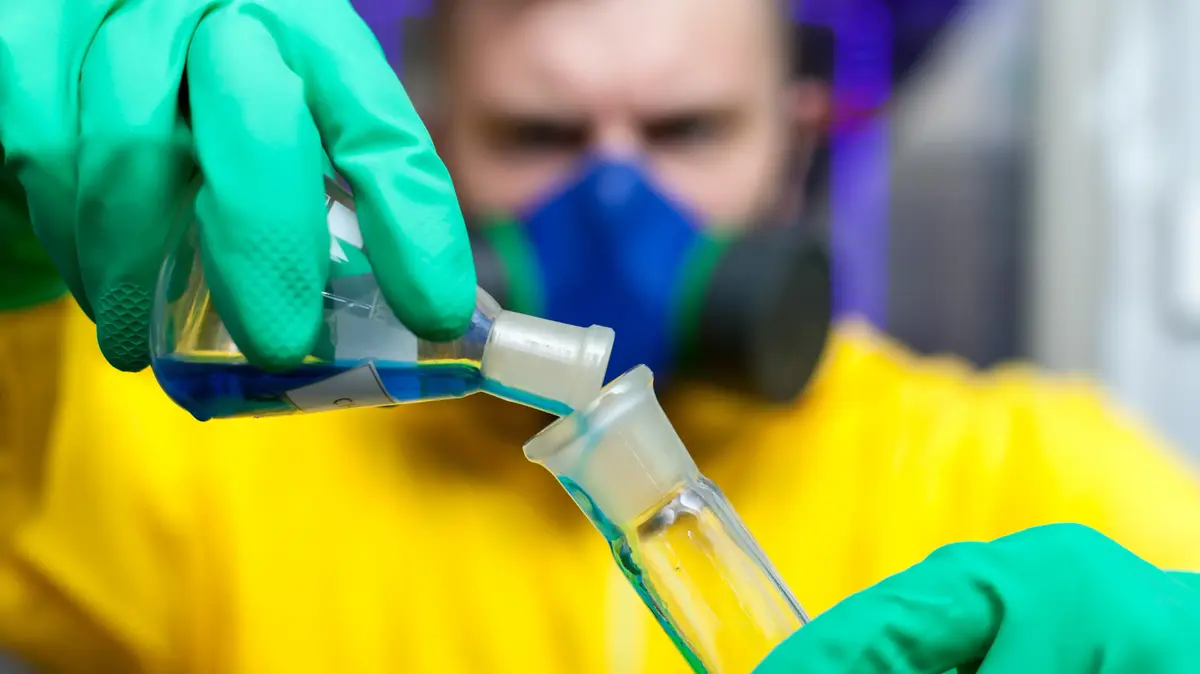By Caroline Hopkins -
NBC News
Late last year, one of Dr. Vance Fowler's patients, a man in his 60s who had returned to North Carolina from visiting family in Nepal, died of a bacterial infection.
He had been treated in one of the best hospitals in the US, with access to the most powerful antibiotics.
But the infection, a drug-resistant strain of E. coli, kept advancing.
“Antibiotic resistance is a real problem that, with little or no warning, can affect any of our lives at any time,” said Fowler, an infectious disease specialist at Duke Health.
“We don't have enough drugs,” he recalled.
Health authorities have been warning the public about antibiotic resistance for decades.
This warning has been made more urgent in light of an upcoming World Health Organization (WHO) report noting that only a handful of new antibiotics are in development.
[The antibiotics didn't work? Food may be partly to blame]
The preliminary data of the report, published by the WHO this month, paint a bleak picture: only 27 new antibiotics against the most dangerous infections are in the clinical trial phase.
By contrast, in 2020 there were more than 1,300 cancer drugs in clinical trials, according to a report by the trade organization Pharmaceutical Researchers and Manufacturers of America (PhRMA).
Of the antibiotics in the trial phase, the WHO considers that only six are innovative enough to overcome antibiotic resistance, and only two are capable of attacking the most resistant bacteria.
Agency officials will present the full report at the European Congress of Clinical Microbiology and Infectious Diseases next month.
Pediatricians concerned about shortage of children's medicines in the US and reveal the cause
March 23, 202305:40
It is also not known whether this handful of new drugs in clinical trials will work.
Between 2017 and 2021, only one new antibiotic , cefiderocol,
was approved that could treat superbugs on the WHO's most critical list, including strains of Acinetobacter baumannii, Pseudomonas aeruginosa, and Enterobacteriaceae.
These pathogens can cause a number of potentially serious infections in the lungs, urinary tract, ears, blood, open wounds, or even the brain and spinal cord.
increases stamina
Drug-resistant bacteria are becoming more common.
In the United States alone, the Centers for Disease Control and Prevention (CDC) estimates that more than 2.8 million people develop drug-resistant infections each year, and more than 35,000 die as a result. .
[FDA warns of shortage of amoxicillin, the most widely used antibiotic in the country to treat infections]
Certain drug-resistant strains of gonorrhea are on his list of urgent superbugs, as is Clostridioides difficile, or C. diff, which can cause life-threatening diarrhea and inflammation of the colon.
The CDC estimates that 12,800 people die from C. difficile each year.
One of the most common superbugs in the United States, methicillin-resistant Staphylococcus aureus (MRSA), kills 9,800 people a year.
MRSA can spread rapidly in long-term care facilities and hospital settings, where cases increased 13% during the first year of the coronavirus pandemic.
Infections with the drug-resistant Shigella bacteria, which often causes severe diarrhea and stomach pain, have also increased at an alarming rate.
In February, the CDC warned that last year, 5% of Shigella infections were "extremely drug resistant," meaning they did not respond to a range of antibiotics, up from zero percent in 2015. Shigella it can be spread through sexual contact, particularly between men who have sex with men.
Bacteria aren't the only culprits.
In the United States, infections resistant to antifungal drugs by the fungus Candida auris increased 60% in 2020, according to the CDC.
[What is known about the new antibiotic-resistant strain of gonorrhea that the US detected for the first time]
The WHO has identified 12 resistant superbugs as "priority pathogens," and the CDC has a list of 18 drug-resistant bacteria and fungi.
Worldwide, more than five million people die from antibiotic resistance, outnumbering deaths from HIV, tuberculosis and malaria combined, according to Valeria Gigante, team leader in the antimicrobial resistance division. of the WHO.
“Antimicrobial resistance is one of the major global health threats facing humanity
,” he said.
“We should no longer call it a silent pandemic.
We should speak loud and clear: it is really a pandemic,” he added.
The shortage of 295 drugs in the US increased by 30% in the last year
March 23, 202301:52
Bacteria and fungi are more likely to develop resistance the more they are exposed to antibiotics or antifungals.
In the case of Fowler's patient, the specific strain of E. coli bacteria had a gene that produces a protein called NDM-1, which can break down even the strongest antibiotics of last resort, called carbapenems.
Currently, most strains of E. coli - there are more than 700 - are not deadly.
But beyond E. coli, several strains of Klebsiella, Enterobacter and Acinetobacter already have this gene, and according to Fowler, more may soon acquire it.
“They don't need a passport to travel,” Fowler says.
And bacteria can swap DNA "like baseball cards."
“Perhaps in five to 10 years, the United States will face reasonably similar patterns of resistance to what we have in India or Greece,” said Dr. Venkatasubramanian Ramasubramanian, president of the Indian Society of Clinical Infectious Diseases.
In both countries there have been outbreaks of bacteria resistant to the most powerful antibiotics of last resort.
"It's a matter of time," he said.
[Study Reveals That Losing Weight, Even Even Gaining It Back, Is Good For Your Heart In The Long Run]
The WHO states that the rate of resistance to antibiotics is accelerating.
Between 1970 and 2000, the average time it took for resistance to new antibiotics to develop was just two to three years, compared with an average of 11 years between 1930 and 1950. Resistance skyrocketed during the early days of the
pandemic
, when many health systems abused antibiotics, which have no effect on COVID-19 because it is caused by a virus, not a bacterium.
Where are the new drugs?
The economic model for new drugs—pharmaceutical companies invest heavily upfront to prove a drug's safety and efficacy, then recoup that money in sales once it's approved—“doesn't work with antibiotics,” Ramasubramanian says.
The development of a new antibiotic can take up to two decades and typically cost between $568 million and $700 million, according to PhRMA.
And only 1 in 30 of these drugs is ultimately approved to treat patients.
But unlike drugs intended for widespread use, there is international pressure to use fewer antibiotics.
Excessive or unnecessary use of antibiotics increases the chances that a pathogen will develop resistance.
"With a new antibiotic, we say, 'don't use it,' or 'use it sparingly so it lasts longer," Ramasubramanian said.
“It's not an attractive proposition for anyone in the industry,” he noted.
Some countries have put in place what they call “antibiotic stewardship programmes”.
These programs encourage doctors to prescribe drugs only when there is a clear need.
In the United States, for example, the CDC offers training courses and guidelines to help curb antibiotic use and prevent resistance.
Biden announces fines for pharmaceutical companies that have raised prices faster than inflation
March 16, 202300:19
Even when antibiotics are really needed, they are often prescribed for only a few days or weeks, making them far less lucrative than long-term, daily-use drugs for chronic conditions like blood pressure or diabetes.
“After all, the 'supply and demand' model is not sustainable for antibiotics,” Fowler said.
there is no easy answer
If drugmakers do not start developing new antibiotics soon, the world could face a "catastrophic scenario," WHO officials warned.
More people could die from infections that were previously treatable, such as bacterial pneumonia, gonorrhea, or salmonella.
Those who need antibiotics the most, such as people who are immunosuppressed and those receiving cancer treatment, will be the most vulnerable.
“We have reached the post-antibiotic era
,” Ramasubramanian warned in a March 15 statement.
"The current antibacterial pipeline is woefully insufficient to make a difference in the fight against the current threat of antibiotic resistance."
[The opioid crisis is not just a white problem: deaths among Hispanics have skyrocketed]
Fowler, who was not involved in the WHO report, agreed with the organization's use of bold "catastrophic" language.
“WHO has hit the nail on the head,” he said.
“I loved that they made such a strong statement because I think it's true,” he said.
The increase in cases of norovirus and Shigella bacteria worries experts
March 5, 202301:50
Although there is no single solution to catalyze the development of new antibiotics, Gigante says that funding and government policies could help move the needle.
For example, some countries have devised new economic models to incentivize the development of antibiotics.
In the US, lawmakers are debating a law called the PASTEUR Act, which would pay contract pharmaceutical companies to make these critical new drugs available to patients.
“It would be a subscription model similar to Netflix,” Fowler explains.
Pharmaceuticals would not have to rely on the minimal income they would earn from selling their antibiotics on the commercial market.
The proposed model has been controversial and has not become law, but it is an example of the kind of "new economic model" that WHO officials like Gigante want policymakers to explore.
[Drug Combination May Extend Life for Women With Advanced Endometrial Cancer]
US taxpayer money already funds some research on new antibiotics.
For example, Fowler runs a program called the Antibacterial Resistance Leadership Group, which funds new trials with grants from the National Institutes of Health.
“It's a huge amount of money, but much more is needed,” he says.
Better tests could help
In addition to calling for new antibiotics, WHO officials want diagnostic methods for bacterial infections to be improved and speeded up.
Currently, for the first 48 hours after a patient gets an infection, "you don't know what germ you're treating," Fowler says.
The faster and more accurately doctors pinpoint the particular bug infecting their patients, the less likely they are to prescribe antibiotics that don't work, potentially leading to further resistance.
The diagnostic process involves collecting a sample, sending it to a laboratory, growing the bacteria from that sample until there are enough to test, and once in the laboratory, trying several different antibiotics to see which one works.
It can take days or weeks, and the sickest patients can't wait that long.
"It's not for lack of good clinical practice, but the state of the art in treating infections in 2023 is conjecture," Fowler said.
"It's scary when you think about it."





/cloudfront-eu-central-1.images.arcpublishing.com/prisa/VU7S6EWZZVMMDGHINQUMAFJHCE.jpg)


/cloudfront-eu-central-1.images.arcpublishing.com/prisa/SOFY3H6XYZCWXCQ5WDUPWDXBKA.jpg)





